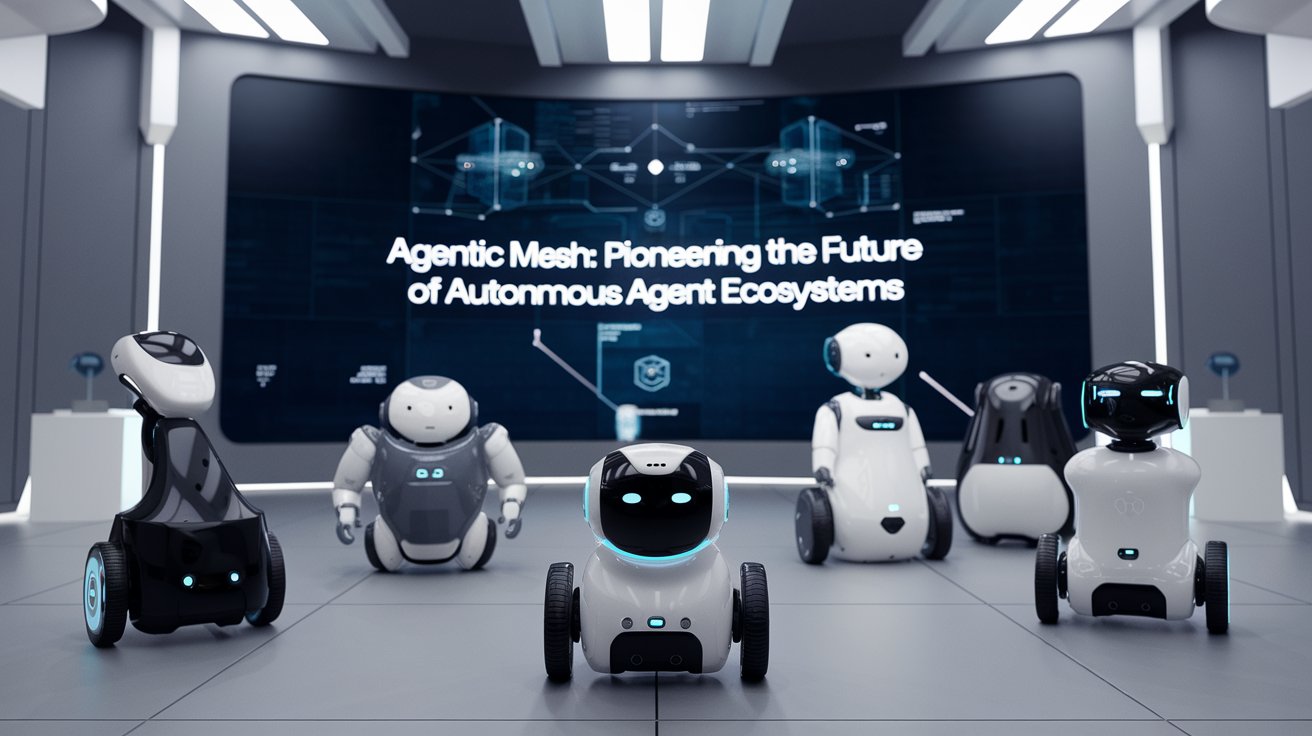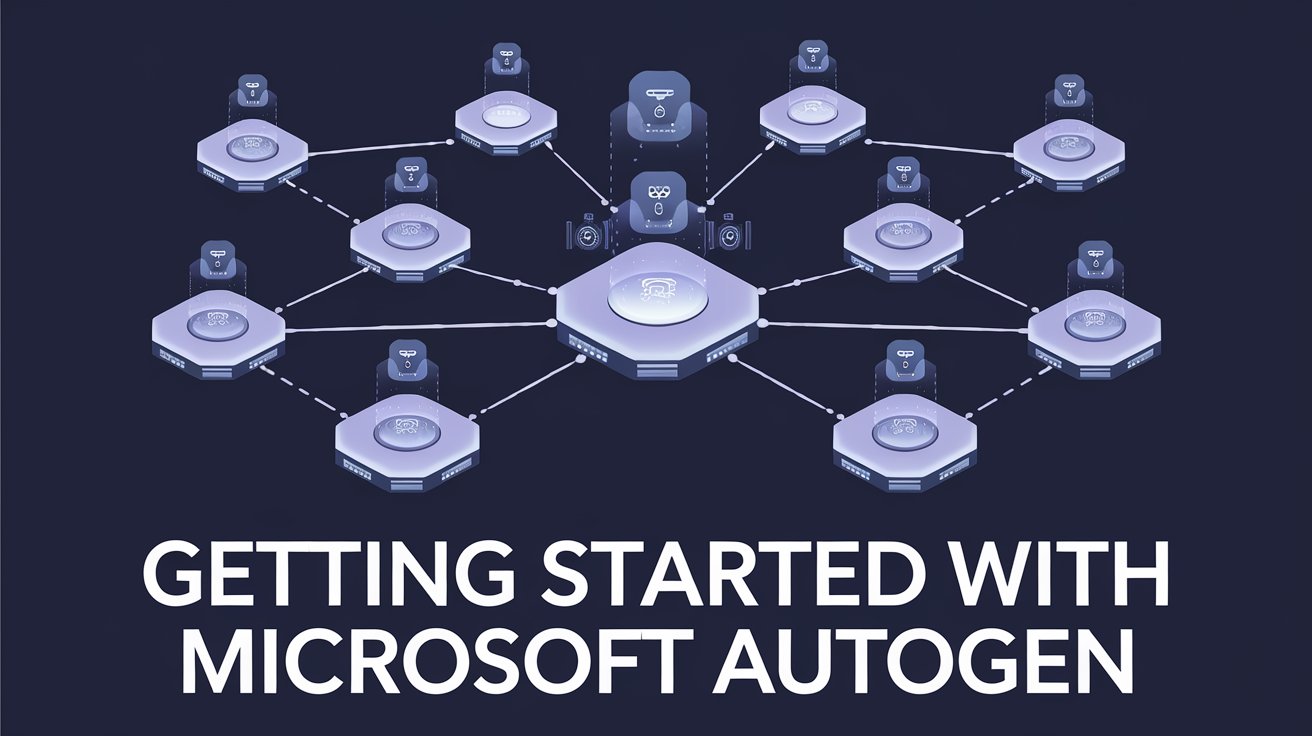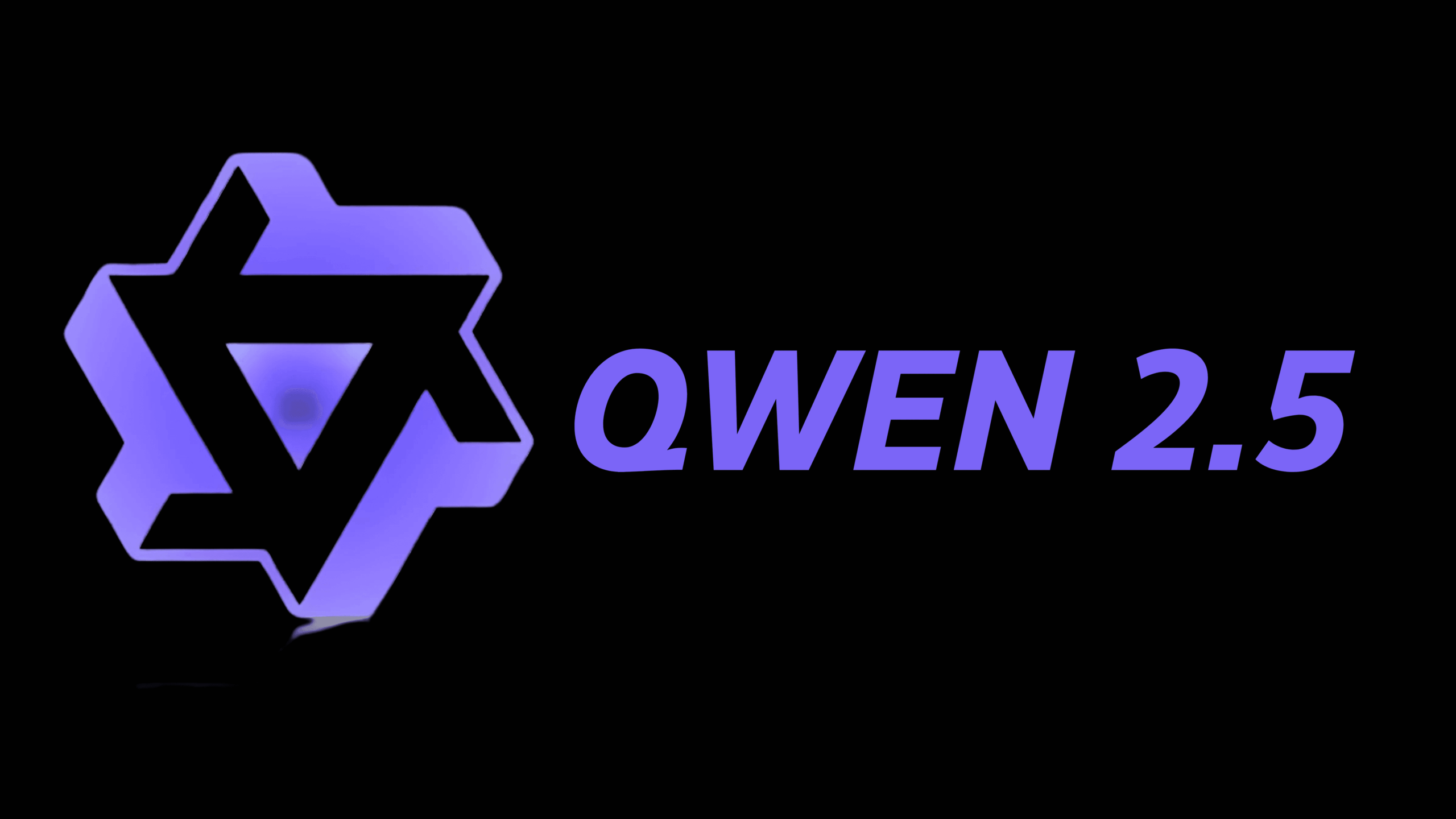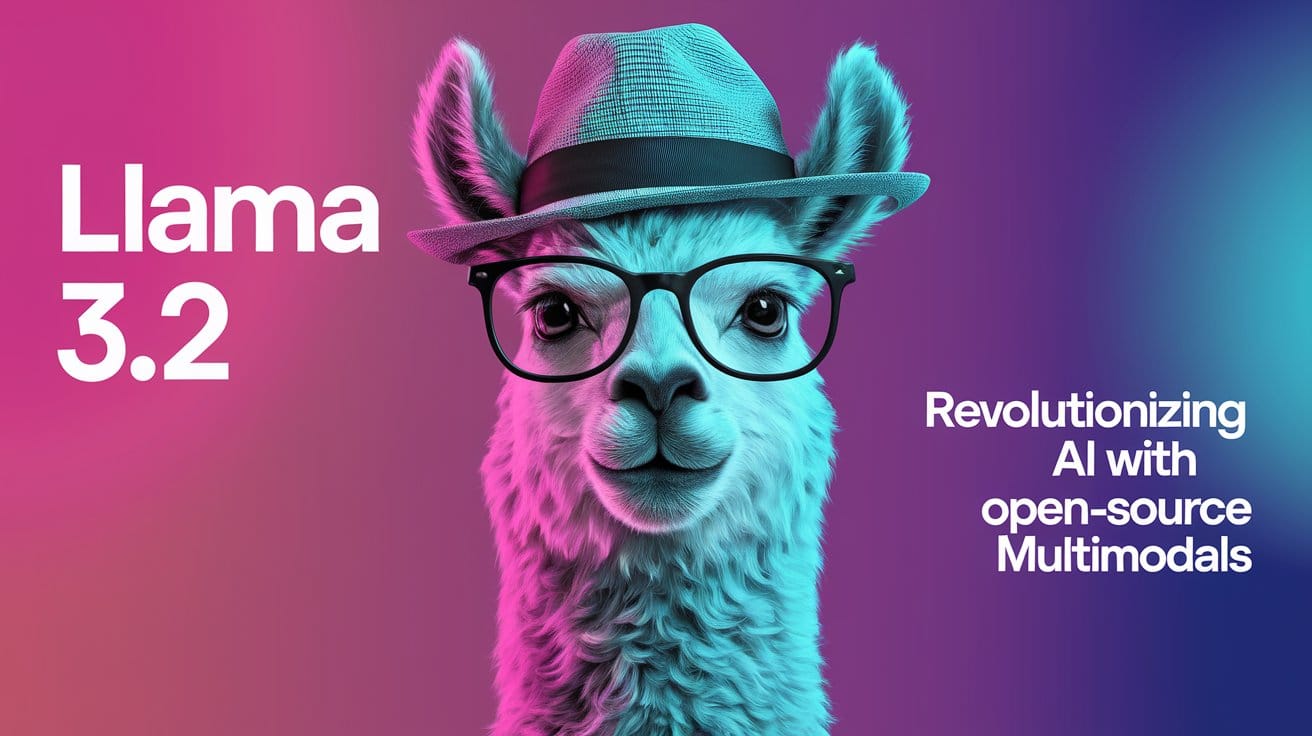Agentic Mesh: Pioneering the Future of Autonomous Agent Ecosystems

As the capabilities of artificial intelligence continue to grow, autonomous agents—AI-driven entities capable of independently performing complex tasks—are increasingly integrated into various sectors. These agents promise improved efficiency, continuous operation, and the potential to automate vast swathes of routine and complex tasks alike. However, as more agents join this digital ecosystem, managing and coordinating these entities safely and effectively becomes a substantial challenge.
The Agentic Mesh is an innovative framework designed to address these concerns, providing a secure ecosystem that fosters collaboration, interaction, and safe transactions between agents. Through well-defined protocols and trust-building mechanisms, the Agentic Mesh enables agents to not only complete tasks but also interact autonomously, creating a self-sustaining digital ecosystem.
Table of Contents
What is Agentic Mesh?
Agentic Mesh is an interconnected ecosystem that supports the safe discovery, interaction, and transaction of autonomous agents, allowing them to operate within established boundaries, gain trust, and interact with users and other agents. This system is built on principles of transparency, reliability, and ease of use, creating an environment where agents can find collaborators, access resources, and transact within a framework that promotes trust and accountability.
To understand how Agentic Mesh operates, it’s helpful to first define its key concepts:
- Agentic AI: Agentic AI refers to advanced AI models with sophisticated reasoning and iterative planning capabilities, enabling them to autonomously solve complex, multi-step problems.
- Autonomous Agents: These are digital entities powered by agentic AI, capable of independent decision-making and task execution in line with their defined purpose and constraints.
The Architecture of Agentic Mesh
Agentic Mesh’s architecture supports both the core functions required by autonomous agents and the regulatory, management, and interaction needs of the ecosystem. The main components include:
- Marketplace: The user interface layer where agents are listed, discovered, and reviewed by users.
- Registry: A central repository for all agent metadata, including purpose, ownership, policies, and other relevant details. This helps in tracking, discovery, and compliance.
- DNS Integration: By assigning a DNS name to each agent, the system ensures that agents can be easily located, accessed, and managed through a familiar internet-based structure.
These elements collectively support three distinct user groups within Agentic Mesh: consumers, creators, and governance professionals. Consumers interact with agents to complete tasks, creators build and publish agents, and governance professionals ensure compliance and trustworthiness within the ecosystem.
Characteristics of Autonomous Agents in Agentic Mesh
To operate in the Agentic Mesh, agents must meet specific design criteria that facilitate their reliability and utility:
- Purposeful Design: Each agent is designed with a clear, singular purpose, which dictates its actions and ensures that it operates within set boundaries. Purpose-oriented design helps avoid unintended actions and maintains operational focus.
- Accountability: Every agent is tied to an owner who oversees its behavior, ensuring accountability and responsible usage. The agent’s owner provides an essential link for governance and control, fostering trust within the ecosystem.
- Trustworthiness: An agent’s credibility is built on consistent, predictable behavior. Agents are required to maintain transparent records of their operations, adhere to legal and ethical standards, and provide audit trails, all of which are essential for instilling trust in users and other agents.
- Autonomy: While agents act independently within their defined purpose, they must respect the rules and limitations set by their owners and the ecosystem. This autonomy is vital for scaling the ecosystem and allowing agents to respond promptly without constant supervision.
- Discoverability: Agents can be found by users and other agents through the registry, making it easy to search for agents based on their characteristics and capabilities.
- Intelligence: Every agent employs general-purpose and specialized language models to plan and execute tasks effectively, enhancing their problem-solving abilities and adaptability.
Together, these characteristics foster an environment of mutual trust, making it possible for autonomous agents to collaborate effectively and predictably within the Agentic Mesh.
If you are more interested in modern llm Architecture, check out our recent blog on Understanding Mixture of Experts (MoE): A Deep Dive into Modern LLM Architecture
Core Functionalities of the Agentic Mesh Ecosystem
The Agentic Mesh operates through three primary workflows: Registration, Discovery, and Task Execution.
1. Autonomous Agent Registration
Registration is the process by which an agent configures its identity, registers in the central registry, and becomes discoverable in the Agentic Mesh. The key steps involved include:
- Configure Agent: The initial setup involves defining the agent’s purpose, owner, policies, and capabilities. This metadata provides essential details for discovering and interacting with the agent.
- Register Agent in the Central Registry: This step formally records the agent’s information, making it accessible within the ecosystem.
- DNS Registration: Assigns a unique DNS name to each agent, allowing them to be accessed like any other internet entity.
- Approval: A human-in-the-loop process may be required to approve registration, ensuring that each agent meets security and functionality standards.
Upon successful registration, the agent’s metadata is updated in the registry, enabling visibility and interaction within the Agentic Mesh.
2. Autonomous Agent Discovery
Discovery enables users and agents to locate relevant agents based on specific criteria. Discovery begins with a query to the registry, which returns a list of agents that match the search parameters.
Once an agent is found, a DNS lookup locates it for direct interaction, allowing it to communicate with other agents or users for task completion. This discovery mechanism is crucial for establishing collaborations and initiating transactions within the ecosystem, making it seamless for users and agents to find specialized expertise or capabilities on demand.
3. Task Execution
Task execution is the end-to-end process by which an agent completes a designated task. This begins when a user browses the agent marketplace to view available options and select an agent that meets the task requirements. The selected agent then develops an execution plan using its language model, which may involve collaboration with other agents to complete complex tasks.
Throughout task execution, the agent communicates with the user, providing updates and requesting any additional input needed. This managed interaction ensures that the user remains in control while leveraging the agent’s autonomous capabilities.
Experience Planes within Agentic Mesh
The Agentic Mesh ecosystem is designed to accommodate three main experience layers, each catering to a unique user perspective:
- User Experience Plane: This layer provides consumers with a marketplace-like experience where they can search, filter, and interact with agents. It also offers billing details and performance metrics, fostering a transparent and user-friendly environment.
- Agent Experience Plane: Agents operate within this layer to discover, interact with, and transact with other agents autonomously. This layer is highly API-driven, allowing agents to communicate effectively and execute tasks independently.
- Operator Experience Plane: Focused on managing and maintaining the ecosystem, this layer provides infrastructure-level controls to monitor agent performance, troubleshoot issues, and ensure system stability.
Each plane is designed to optimize the user experience, facilitating seamless interactions across multiple perspectives within the ecosystem.
The Agentic Stack: Building Autonomous Agents
The Agentic Stack outlines the essential technological components for building autonomous agents. It includes:
- Communications and APIs: Allowing agents to discover, observe, and interact with other agents.
- Control and Management: Facilitates environment awareness, perception, and task execution, allowing agents to manage resources effectively.
- Learning and Decisioning: Enables continuous improvement through data-driven learning and planning.
- Run-Time Environment: The technical environment that supports secure and stable agent operations.
- Orchestration and Specialized LLMs: By integrating orchestration language models and specialized LLMs, the Agentic Stack leverages advanced language models to enhance task planning and execution. For more on recent advancements in language models, check out Hugging Face’s resources on the latest LLM technologies.
This modular structure equips agents with the necessary capabilities to operate autonomously and interactively within the Agentic Mesh.
Building Trust: The Foundation of Agentic Mesh
Trust is fundamental to the Agentic Mesh, enabling both users and agents to operate confidently within the ecosystem. Key elements of the trust-building process include:
- Feedback Mechanisms: Allow users and agents to provide performance feedback, helping identify reliable agents.
- Track Record of Reliability: Agents establish trust by consistently delivering on their promises, which is reflected in their performance history.
- Transparent Certification: Certification standards ensure that agents meet operational and ethical guidelines, making them reliable collaborators.
- Third-Party Audits: Independent audits verify agent compliance with stated policies, adding an additional layer of trust.
- Publication of Trust Metrics: Accessible trust metrics allow users and agents to make informed decisions about engaging with others in the ecosystem.
Trust metrics ensure transparency, making the Agentic Mesh a reliable environment for agent interactions and transactions.
Conclusion: The Future of Autonomous Collaboration
The Agentic Mesh represents a groundbreaking step in the development of autonomous agent ecosystems. By providing a structured, secure environment for agent interaction, the Agentic Mesh enables complex collaborations, drives efficiency, and fosters trust within digital spaces. As businesses and industries increasingly adopt autonomous agents, the Agentic Mesh is poised to play a critical role in shaping the future of work and collaboration, transforming traditional workflows and expanding the potential of AI-driven agents.





